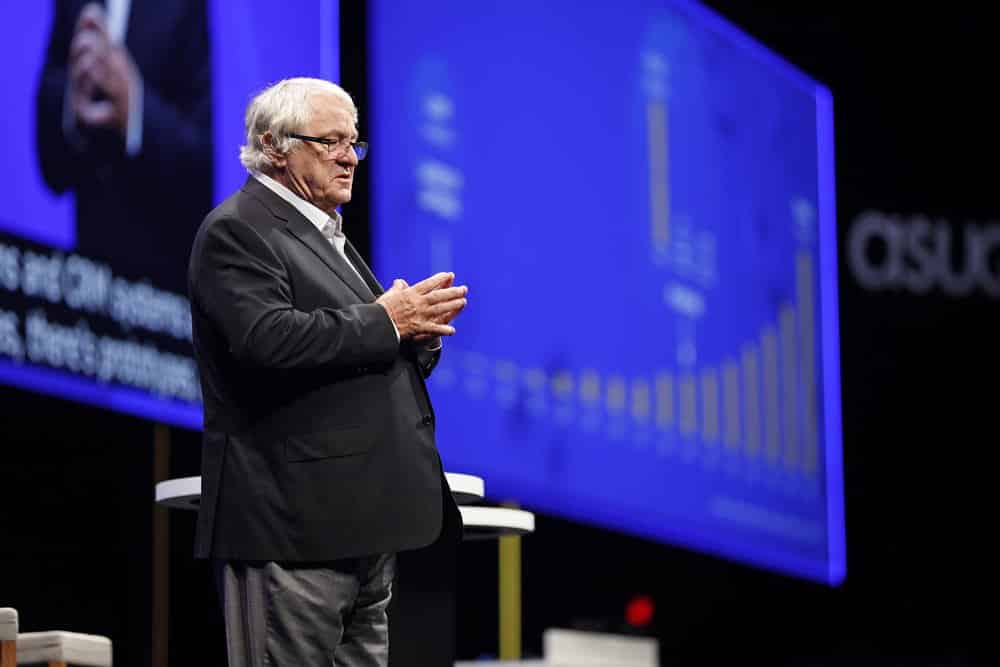Sapphire: Low Cost Platform

What shaped the entire Sapphire most were the visions and strategies of the SAP executive board members, because there was little that was concrete. Everything will be better, promised Bill McDermott and Executive Board member Christian Klein.
For a long-standing SAP customer, these promises are naturally hard to believe, because in the important SAP service area, board member Michael Kleinemeier is without a successor. He has now had to extend his contract by one year and will be back on the Sapphire in 2020, although he planned to be retired by then.
The entire SAP cloud business has lost its master mind with the departure of CEO Rob Enslin to Google. Now three members of the Executive Board have to take care of this SAP construction site: Christian Klein, Jennifer Morgan and Jürgen Müller.
Things are not looking good in the SAP back office and behind the Sapphire stage. CFO Luka Mucic had to pull the ripcord and announce a second Capital Markets Day in New York for this year.
An absolute and far from planned novelty at SAP. Hasso Plattner's sarcastic criticism of the previous speakers was therefore only justified: He would now hold a low-cost keynote without the support of his long-time partner and Chief Technology Officer Bernd Leukert. SAP's new Chief Technology Officer Jürgen Müller does not yet seem ready for the big Sapphire stage.
But even Plattner could not escape the general Sapphire trend "a promise of the future". One of his favorite words was "hokey stick". He meant to imply that SAP is currently still in a self-discovery phase after acquisitions such as Callidus and Qualtrics, and that the Hana database could become a platform for the "intelligent enterprise.
If SAP does its homework in the coming years, the revenue, margin and share curve could take off like the shape of a field hockey stick. But that is just a promise for the future.
Even the benevolent SAP user group DSAG sees the present as still full of unsolved challenges.
"Ariba, Hybris, Concur, Fieldglass, Callidus and most recently Qualtrics: SAP's acquisition policy in recent years has led to a massive need to bring systems and master data together.
We see that the solutions purchased from SAP still involve certain integration difficulties. We have already communicated to SAP that the integration of the individual components is not yet satisfactory.
From our perspective, there are indications that SAP is already working on further integration and, as announced at Sapphire, is offering an initial solution in the area of customer management with the Customer Data Cloud."
said DSAG CEO Marco Lenck, commenting on the announcements in Olrnado.
Definitely like a hokey stick, the global data volume will develop. Professor Plattner made this development clear during his Sapphire keynote and at the same time pointed out the problem of this enormous volume of data in connection with an in-memory computing database such as Hana.
Big Data overwhelms the Hana database concept, where the paradigm is that all data is in main memory. But SAP has taken precautions: With the purchase of Sybase in 2010, SAP became the owner of the database ASE (Adaptive Server Enterprise), which shows a similar architecture as Hana but is hard disk oriented.
The combination of Hana in-memory computing and Sybase ASE can now be used to build very large, hybrid database systems for the coming Big Data. The existing SAP customer then gets the best of both worlds with the Hana platform: fast in-memory computing and inexpensive disk storage space.
Integration and databases are just two of the many construction sites that Plattner sees at SAP, and he hoped that SAP employees would leave their comfort zone and air-conditioned offices and get to work. One aid, in Plattner's opinion, could be the acquisition of Qualtrics.
With this software platform, it should be possible to get very fast and precise feedback from the market. This would then enable the company to better plan its own development work. In any case, Plattner called on his CEO from the Sapphire stage to significantly increase the speed of innovation.
Hasso Plattner sees SAP's existing customers predominantly in the public cloud in the future, with a continuous, invisible relaunch from Hana to S/4 to Qualtrics. It was hard to build SAP, Plattner said, and it will be even harder for employees, he predicted.
Whether SAP's existing customers follow his path could not be deduced from the reactions during his keynote.







1 comment
Podiwinsky
Selbst wenn es der SAP gelingt, in absehbarer Zeit ihre vielen Produkte zu integrieren oder zwischen diesen “Brücken zu bauen”, ist das Problem noch lange nicht gelöst. Denn jedes einzelne Produkt muss von den Kunden (und vorher wahrscheinlich noch von den Beratern) erlernt, durchschaut und beherrscht werden. Danach muss sich jedes Unternehmen überlegen, welche Produkte es in welcher Reihenfolge einsetzen will, welcher Nutzen daraus generiert werden kann, wie sich deren Einsatz auf die internen Funktionen und Prozesse auswirkt, welche Investitionen dafür erforderlich sind,.. bevor es beginnen kann, die einzelnen Produkte und Integration zur bestehenden SAP-Software projektmäßig zu implementieren. Ein Ariba , Fieldglass, Qualtrics,… lassen sich nicht per heiligen Geist in das ERP-System einhauchen, da fließt pro Produkt viel Arbeit, Fleiss, Kosten, Zeit, Schulungen, Umorganisation, Unannehmlichkeiten einer Produktivsetzung ,… und das alles ist ein Projekt über viele Jahre.
Das werden sich die Bestandskunden nur im Fall einer sehr hohen Nutzenerwartung antun und abwägen , ob es nicht wertschöpfendere IT-Projekte im Rahmen der Digitalisierung, IoT, …. gibt